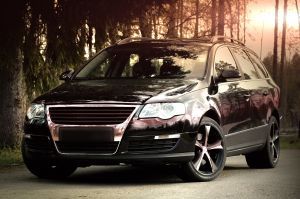There are a lot of irresponsible drivers on the road. In other words, being a good driver, a cautious driver, does not assure you that you won’t be involved in an auto accident. You need to do more than just follow the rules of the road and travel at safe speeds. You need to remain alert and drive defensively. What is defensive driving? It is driving while keeping your guard up, watching for other vehicles and the mistakes other drivers might make, being prepared to react so that those other drivers don’t cause you to suffer injury and other damage. Here is a guide on how to drive defensively and avoid accidents.
1. Do not assume other drivers are going to operate their vehicles safely. The National Safety Council states that 77 percent of all accidents can be attributed to driver error. Always assume the other drivers on the road are going to do the worst. Ask yourself, what if the vehicle behind me tried to pass on my right? What if the vehicle slowing at the intersection decides to blow that red light? What if the vehicle on my left decides to cut into my lane without signaling? Assuming the worst-case scenario will prepare you for anything, and your reaction to that scenario will be that much faster.
2. Put enough space between you and the car in front of you. Sounds simple enough, right? Yet four out of ten accidents involve rear-end collisions. Many of these accidents can be avoided if drivers would simply allow enough space between their vehicle and the vehicle traveling in front of them. But many drivers prefer to tailgate. And tailgating causes accidents. Conventional thinking is that you should allow at least a two-second gap between you and the vehicle in front of you. Allow three seconds when traveling on the highway, and four or more when weather conditions make the roadway slippery or slick.
3. Don’t allow yourself to become distracted. People eat in their cars, talk on their cell phones, apply make-up, read War & Peace. These distractions cause accidents, pure and simple. So save these activities for red lights or wait until you are at your destination. Or pull to the side of the road if you simply must remove that Kelly Clarkson CD that your daughter left in the player. Whatever you do, don’t let down your defenses. Pay attention to the road and don’t allow yourself to become distracted.
4. Turn your headlights on and use signals. When did it become uncool to do these simple things? So many people shift lanes without signaling these days, and simply refuse to turn their headlights on until the roadways are pitch black. Headlights should be turned on when daylight is dim, when it is raining, and any other times visibility is low. And you should always signal when you are turning or shifting lanes, even if you think no one is around. Failure to signal causes a good many accidents.
5. Maintain your lane. Frequent lane changes cause accidents. Slower traffic should remain to the right, faster traffic should remain to the left. What’s so difficult to understand about that? When the roads are crowded, frequent lane changes do not alleviate the traffic, they add to it. You will not get to your destination any faster by changing lanes a half dozen times per minute than you will by maintaining your lane.
6. Maintain awareness. Always look around and check your mirrors to see exactly where you are and which way you could maneuver to avoid an accident should it become necessary. In other words, always plan an escape route. Is there a shoulder on the side of the road? Is the lane to your left or right open? If one of those bad drivers mentioned earlier were to cause a worst-case scenario, make certain you know which way you will go.
Those are some tips on how to drive defensively and avoid accidents. But you should also follow common sense practices like keeping your speed down, adjusting for hazards, wearing your seatbelt, and looking far enough ahead. Drive safely. Drive defensively.


